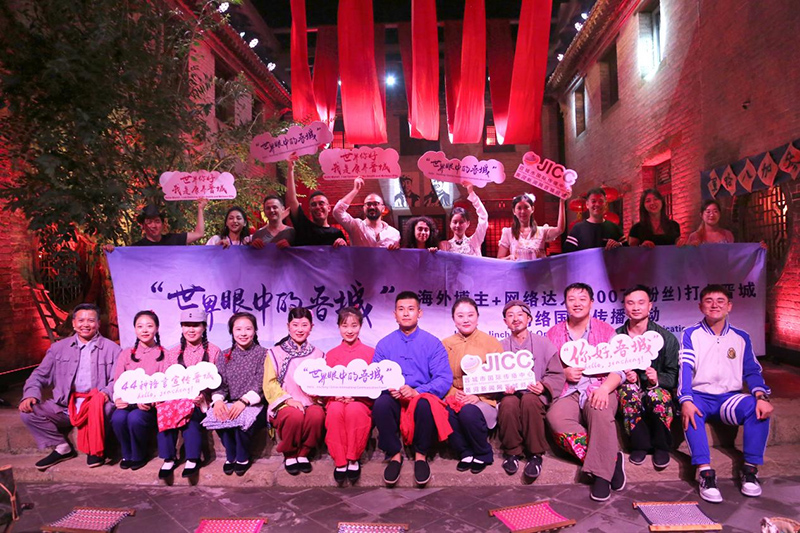Explore Chinese Wedding Customs in "Xizhen Suzhuang"

Yellow River News Network Jincheng (Reporter Shang Dongxia) August 18th morning, "the world's eyes of Jincheng" network of international communication activities in Jincheng, Shanxi Province, started. 19 evening, overseas bloggers, jittery V, local netizens and media reporters came to Gaoping City, "hi town of Suzhuang", to card the landmark tour of Jincheng, in-depth experience of China's "hi" culture and wedding customs. The "Jincheng Landmark Tour" is a deep experience of Chinese "happy" culture and wedding customs.
Walking into Suzhuang Village, Hesi Town, Gaoping City, "Taihang Family Xi Town Suzhuang" came into view, with a wide gateway plaza, Ming and Qing Dynasty characteristics of the ancient houses, eye-catching red lanterns, simple and elegant lodging, all of which make people feel the perfect blend of tradition and modernity.
Suzhuang Village is backed by Yuxian Mountain, one of the eight scenic spots of Gaoping, "Yuxian Xiaozhong", facing the water of Danhe River, dotted with South Lake Park, and is in the core starting area of Gaoping's 18-square-kilometer high-speed rail new area, which is a unique location advantage.
Walking into the wedding museum of Suzhuang in Xizhen, festivity and red color is the theme. The first thing that catches your eyes is the clay sculpture wedding, the vivid clay sculpture shows the traditional marriage rituals of Gaoping in the most interesting way. As far as the eye can see, the romantic Chinese red color is everywhere. The culture of "happiness" has been integrated into every corner of the ancient village, which takes the "Cave Flower and Candle Night", one of the "Four Happinesses of Life" in ancient times, as a carrier, and highlights the beauty of the traditional etiquette of the Chinese nation. Here, the traditional wedding etiquette and the architectural history of Suzhuang ancient village are perfectly integrated, allowing people to travel to that joyous moment in a second.
Nowadays, Suzhuang Village is also the base of flower buns for traditional wedding customs and the base of Chinese traditional travel photography.